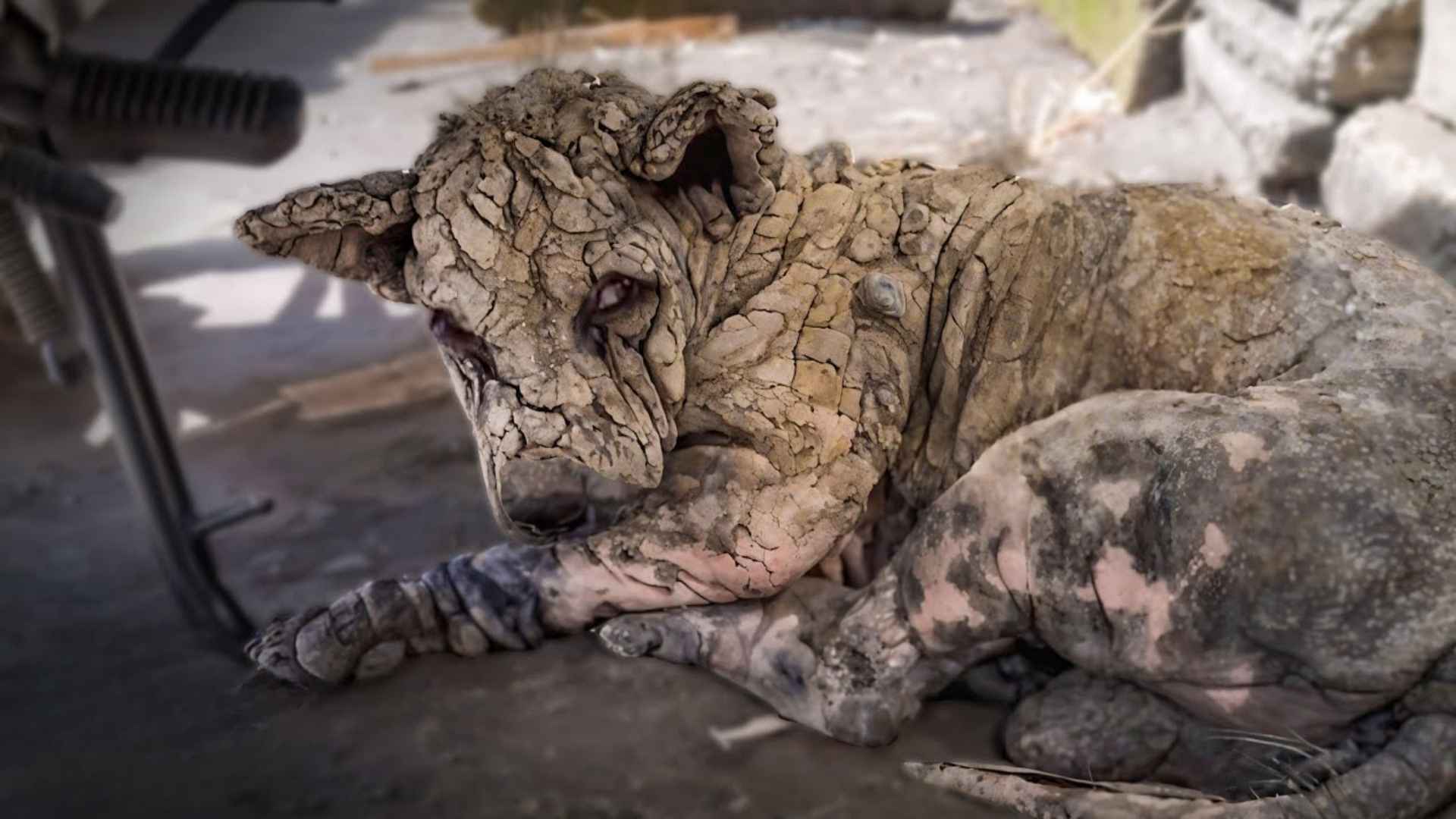He had no collar, no name, just tired paws and broken skin. Pollang was one of thousands forgotten by the streets, surviving day to day through heatwaves, hunger, infections, and relentless pain. Still, he walked. Still, he endured.
But then, something rare happened.
A community—poor in means but rich in heart—noticed him. Locals began offering scraps, leaving bowls of water in the shade, and silently rooting for the dog who refused to give up. It was this small grace that kept him alive.
One day, a woman named Ibu Kamong saw a rescuer feeding another stray nearby. Touched by the moment, she stepped forward. “There’s another dog,” she said softly, “he lives just down my road. He needs more than food. He needs help.”
That dog was Pollang.
Her family gave him shelter, and soon after, he was handed over to rescuers. What they saw shattered them. Pollang, though only six years old, looked decades older. His skin—dry, cracked, stone-like—hung in discolored patches. His body flinched at every touch, and he made no sound, no movement. He had learned that stillness was survival.
They moved slowly. Wrapped in soft cloth, he was gently lifted into a car and taken to the clinic. He didn’t resist. He didn’t relax. He simply stared forward—vacant, silent, somewhere between the alleys he had survived and a future he couldn’t imagine.
At the clinic, the staff worked carefully. Blood tests, scabies treatment, antibiotics for deep infections, and fluids for anemia, each step done with respect for his trauma. He never bit, never growled. Just watched, waiting to see if maybe… maybe this time was different.
And it was.
Pollang is still healing. His eyes still carry old ghosts. But he’s no longer alone. He didn’t ask for a rescue, but he was worthy of one. And now, after so long in the dark, his quiet recovery has begun.


